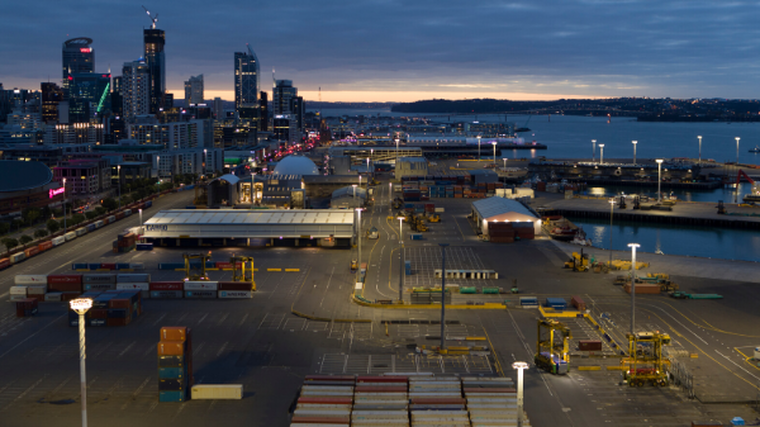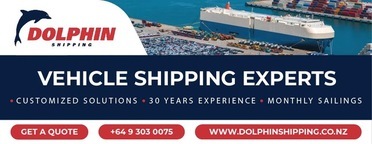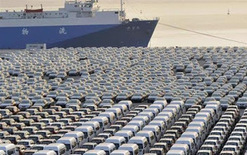Factors combine for port’s big day

Ports of Auckland Ltd (POAL) has handled a record number of automotive imports in a single day, but the volume of vehicles to cross its wharves is set to decline for the foreseeable future.
Staff at the port cleared 1,706 vehicles from its wharves on April 8 – on a normal “good day” it processes about 1,000 units – with a further 1,500 having been offloaded the day before.
POAL’s record-breaking day consisted of 479 new vehicles, 1,053 used and 177 were OWVs and break-bulk units being cleared from the wharves. April 7 was also a bumper day with 1,564 vehicles processed. Of those, 271 were new, 1,121 were used, and 172 were overweight vehicles (OWVs) – those bigger than 20 cubic metres – or break-bulk, those that cannot be driven on and off the ship under their own power.
The numbers came after ships laden with vehicles were already in transit, or preparing to leave Japan, when New Zealand went into lockdown.
The big April 8 effort to clear vehicles from the wharves, which POAL has been eager to keep clear to ensure the passage of essential supplies, followed five PCCs carrying about 5,336 units arriving within the space of four days.
While the vehicles were swiftly taken off the vessels, they could only be taken as far as storage facilities because of restrictions in place to limit Covid-19’s spread.
The rules around alert level four were altered by the government on April 16 to allow vehicles, which were classed as non-essential freight, to be delivered to dealers or compliance centres prepared to receive them.
A lack of congestion on Auckland’s roads sped up the unloading process in April with transporters able to easily access and leave POAL. The port’s record day also involved vessels carrying vehicles that had already received pre-border verification in Japan.
Port spokesman Matt Ball says several factors were behind the daily processing record being set on April 8. “There was no congestion in Auckland, so all cargo went straight to storage yards rather than individual locations for compliance checks. Also, all available trucks were used solely for shifting vehicles. They weren’t being allocated to work for other customers.”
The port’s previous record was 1,616 vehicles on May 18, 2018, which was at the peak of the crisis created by brown marmorated stink bugs.
“The average daily number uplifted that week in 2018 was around 1,000 when it’s usually 660,” says Ball. “We needed the cars and yard space to be cleared quickly because we had a backlog of vessels waiting at anchor – we had 24 vessels that month. The transporter industry pulled out all the stops to get vehicles off-port.
“We had another big day on April 14, 2019, with 1,573. That was straight after Easter and was also slightly more than the total for April 7 this year.”
April's figures

New inspection system
POAL’s daily record for processing cars was notched with Biosecurity New Zealand inspectors now operating in Auckland instead of in Japan.
Ball says the transition to verification checks being performed here went well with an extra vehicle ramp put in place to help accelerate the process.
“Overall, it has all gone smoothly. As with any new process, there is a bedding in period and steps refined. Shipping lines have worked well with the requirement to identify sample vehicles and provide them for inspection.
“POAL has positioned two ramps at Bledisloe South to maximise the number of vehicles that can be inspected. We also work with operators to ensure sufficient space is allocated for the operation.
“Yard space and location, stevedore and MPI resources determine the speed and efficiency of the operation, which was well-resourced even during level-four lockdown.”
Biosecurity NZ inspectors checked more than 1,200 of the 15,702 vehicles that arrived in April, with verifications performed on 100 per cent of units carried by one PCC that berthed at POAL in mid-April.
“This operation went well because a lot of stevedore and MPI resources were provided, along with abundant yard space and no other operations in the area. About 500 units were inspected and passed during daylight hours, and no delays were experienced by the vessel.”
The shipping forecast…
Any peaks in activity at POAL are unlikely to be repeated anytime soon with fewer imports heading our way and vehicle verification checks now being performed at on-shore instead of in Japan after Biosecurity NZ recalled inspectors because of the Covid-19 pandemic.
The number of used imported vehicles is facing a massive drop with forecasts suggesting only 606 will be shipped to POAL in June, compared to the more than 11,000 delivered in March.
Nearly 22,000 vehicles were discharged in Auckland during March, but that number dropped below 16,000 in April. The forecast for roll-on, roll-off vessels in May suggests there will be about 6,000 vehicles.
March’s prediction for 21,796 vehicles to be on-board pure car carriers (PCCs) arriving at POAL included 8,150 new vehicles and 11,624 used. A further 1,290 units were for transhipment to other ports and 732 were OWVs or break-bulk.
April’s initial forecast suggested nearly 20,000 vehicles were set to enter the country, but the impact of coronavirus saw the eventual figure fall to 15,702 as 14 PCCs berthed at POAL. The total was made up of 7,860 new vehicles, 5,587 used, 1,244 for transhipment, and 1,011 classed as OWVs or break-bulk.
More PCCs were originally scheduled to arrive during April but a drop in the number of cars being bought in Japan meant two vessels, which planned to carry 1,680 vehicles between them, having their scheduled arrivals pushed back to mid-May.
Only seven such vessels are expected in May, which has seen POAL revise its monthly forecast of 9,000 vehicles down to 6,140. The port expects this figure to be made up of 3,710 new vehicles, 2,128 used, 65 for transhipment, and 237 OWVs.
Forecasts for June show nine ro-ros destined for Auckland carrying a total of 7,409 vehicles. The predicted total is made up of 6,433 new units, 606 used, 34 for transhipment and 336 OWVs.
Monthly outlooks, as of May 5







